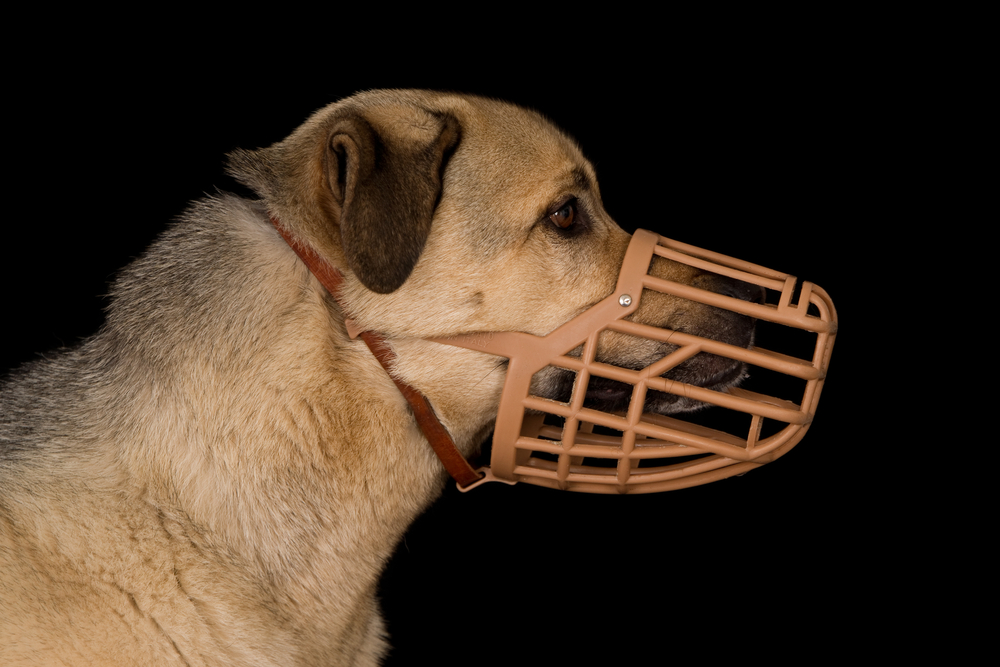Linda Lombardi
Mild cases of noise reactivity in dogs are often not considered problematic enough to treat. However, in a recently published
study, even mild noise sensitivity was associated with lower performance on a puzzle test. This suggests that these dogs have impaired functioning even when noise is not present and that more screening and treatment is called for.
Researchers analyzed three types of data collected as part of a larger study of pet dogs. Dogs were evaluated for noise sensitivity via a questionnaire and a score was calculated based on the number of categories of noise that caused a reaction, the behaviors indicative of fear and anxiety that were exhibited, and the intensity of the reaction. Dogs were also tested for noise sensitivity using a custom noise recording that was played starting at a low volume and gradually turned up.
Learning Affected
Dogs were then evaluated for their performance on a puzzle-box test. The clear plastic puzzle box had nine holes on top and one at the end. A tennis ball was rolled into the box and dogs were given five minutes to try to get it out. If they succeeded in under two minutes, they repeated the test, up to three times in total. While attempting the puzzle, the dogs were wearing a device that recorded their movements.
Comparing data from 17 noise-reactive dogs and 11 non-noise-reactive dogs, those who were sensitive to noise performed worse on the puzzle box. Movement recordings also showed a difference, says lead author Karen Overall. “The ones who did the best moved very efficiently and very quickly. Their movements counted. The dogs who reacted to noise and who did more poorly, or could not solve the test, had very jagged and inconsistent movements.”
These dogs did not seem to be able to move in a deliberate, coordinated manner in response to how the ball acted when they tried to manipulate it. “They have to correct their behavior according to the movement of the object that they see,” she says. “These dogs couldn’t do that.”
Some of the noise-reactive dogs did not perform well enough to repeat the test, but when they did, they also differed. “Unlike the dogs who didn’t react to noise, the dogs who did react to noise couldn’t learn from their previous tests and didn’t improve their scores,” she says.
Sound Effects
While it’s understood that being in a state of anxiety interferes with functioning, the results show that being noise-sensitive has more wide-reaching effects. Even in a relatively low-stress situation where noise was not an issue, these dogs showed impaired performance: “The room is quiet, they’re getting food treats, their people are there, but they still can’t learn.”
Overall says it’s important to understand that this was not a clinical population of noise-fearful dogs. “Largely they were fairly mild, and yet they still couldn’t do this,” she says.
They also were not generally fearful, which was screened for. “The dog who was the worst in the test, the only dog for whom we had to turn off the recording, she was the meet-and-greet queen of the universe,” she says. “She was charming and social and lovely until you played noise, and then she was broken.”
“Moderate to severe noise sensitivity in dogs is a well-known behavior problem. A connection between separation anxiety and noise sensitivity has also been recognized before. What has not been appreciated until Dr. Overall and her colleagues published this research is the impact that noise sensitivity has on the general anxiety levels and learning ability of affected dogs,” says Bonnie Beaver, DVM, DACVB, of Texas A&M University. “These changes exist even in mildly affected dogs, impacting their daily lives with ever-present stress.”
Screening and Treatment
Overall concludes that even mild fear of noises needs to be aggressively screened for and treated.
“I think we don’t realize how much these dogs are suffering,” she says. “This shows that you’ve got dogs who are afraid of noises and it’s impairing other parts of their life that people haven’t looked at. It’s impairing their ability to get information from the environment and their ability to problem solve.” This has a broad impact on their social functioning and their fundamental ability to enjoy life.
Overall now believes dogs should be screened for noise reactivity on every vet visit and that it’s particularly critical to screen young dogs. “I want vets to see dogs three or four times a year in the first two years of life, when their brains are developing, and subject them to standard screening tests,” she says.
This is important because early diagnosis and treatment can make a huge difference. “The rodent literature has shown that if you’re anxious and fearful and from a genetically fearful line, and they treat you as a baby, your brain develops normally,” she says. “And what wouldn’t we give for that? There’s too much suffering; I want these dogs to have joy.”
This article was reviewed/edited by board-certified veterinary behaviorist Dr. Kenneth Martin and/or veterinary technician specialist in behavior Debbie Martin, LVT.
Linda Lombardi writes about the animals that share our planet and our homes for magazines including The Bark, websites including National Geographic and Mongabay.com, and for the Associated Press. Her most recent book, co-authored with Deirdre Franklin, is The Pit Bull Life: A Dog Lover’s Companion.

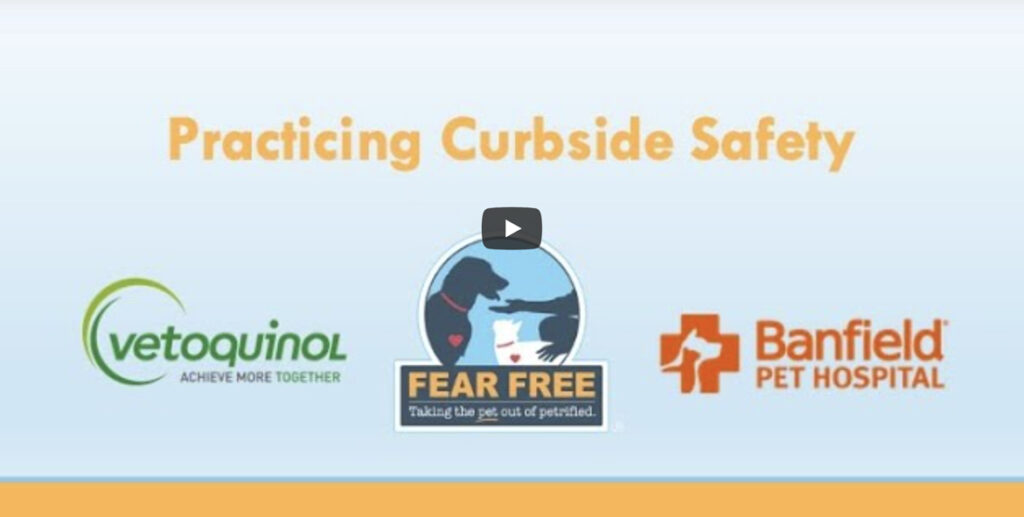

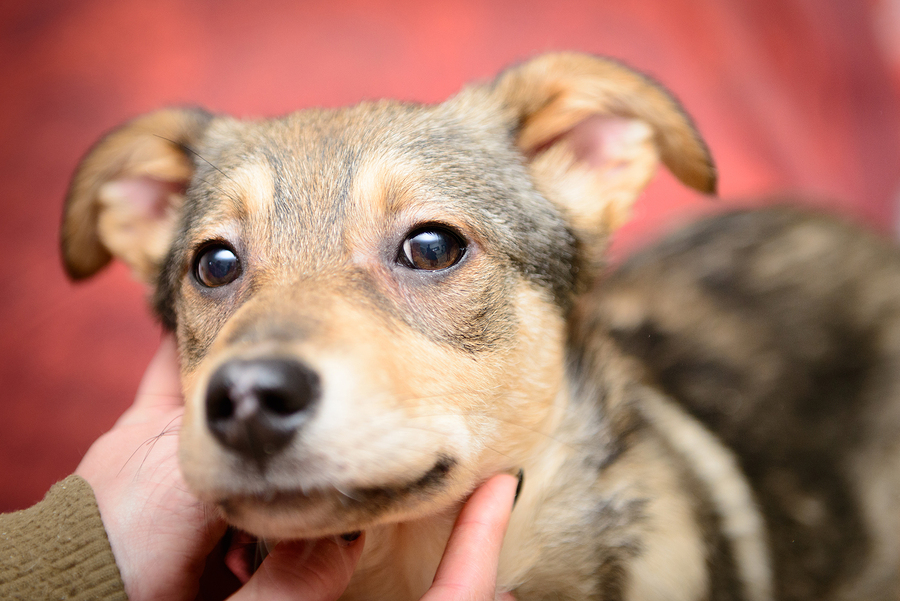
 year I’ve raised a pup following Summit’s training guidelines based on positive reinforcement and what puppies can handle at each developmental stage. Each pup explores the world in tiny increments based on what they tell me through body language about how the new environment feels to them. Sometimes we don’t even get out of the car if the pup seems to be hesitant. If they’re not ready for a new place, we go somewhere they have already been to build confidence. Each pup is born with unique strengths and levels of confidence. The big and bold ones move through environments more quickly than timid pups. My current pup, Jazz, came to me at 11 months of age. She was timid about change, so we moved slowly and calmly. We joined a scent work class, which allows the dogs to move freely at their own pace. This built her confidence quickly and now she rocks in almost any setting. Watching what your pet tells you through body language (relaxed, happy, withdrawn, cowering) is key to a truly Fear Free companion.
year I’ve raised a pup following Summit’s training guidelines based on positive reinforcement and what puppies can handle at each developmental stage. Each pup explores the world in tiny increments based on what they tell me through body language about how the new environment feels to them. Sometimes we don’t even get out of the car if the pup seems to be hesitant. If they’re not ready for a new place, we go somewhere they have already been to build confidence. Each pup is born with unique strengths and levels of confidence. The big and bold ones move through environments more quickly than timid pups. My current pup, Jazz, came to me at 11 months of age. She was timid about change, so we moved slowly and calmly. We joined a scent work class, which allows the dogs to move freely at their own pace. This built her confidence quickly and now she rocks in almost any setting. Watching what your pet tells you through body language (relaxed, happy, withdrawn, cowering) is key to a truly Fear Free companion.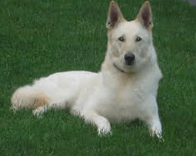 store when she was three months old. Early veterinary visits had caused her to become fearful. Medication didn’t help and she required heavy restraint. Her pet parents called our clinic about taking her on as it had been suggested that she might prefer a female veterinarian.
store when she was three months old. Early veterinary visits had caused her to become fearful. Medication didn’t help and she required heavy restraint. Her pet parents called our clinic about taking her on as it had been suggested that she might prefer a female veterinarian.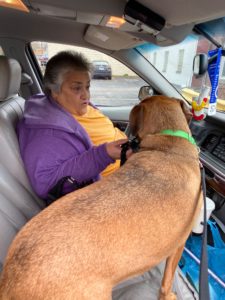 Canasta is fearful of strangers and handling, which makes veterinary visits difficult for both Canasta and her caregiver. I recently started working with Canasta on basket muzzle training and being more comfortable with strangers, but she was in need of bloodwork immediately. Her veterinarian prescribed pre-visit pharmaceuticals, and I worked with the technician to create a handling plan and came to the visit to assist. When Canasta walked in wearing her basket muzzle, I used gentle control to restrain her while the technician drew blood. Canasta even took a treat from the technician when we were done, which is a huge win! Her mother was crying, knowing her dog did so well, and I will continue to work on cooperative care with the caregiver and Canasta.
Canasta is fearful of strangers and handling, which makes veterinary visits difficult for both Canasta and her caregiver. I recently started working with Canasta on basket muzzle training and being more comfortable with strangers, but she was in need of bloodwork immediately. Her veterinarian prescribed pre-visit pharmaceuticals, and I worked with the technician to create a handling plan and came to the visit to assist. When Canasta walked in wearing her basket muzzle, I used gentle control to restrain her while the technician drew blood. Canasta even took a treat from the technician when we were done, which is a huge win! Her mother was crying, knowing her dog did so well, and I will continue to work on cooperative care with the caregiver and Canasta.

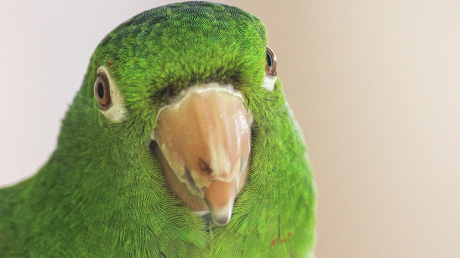
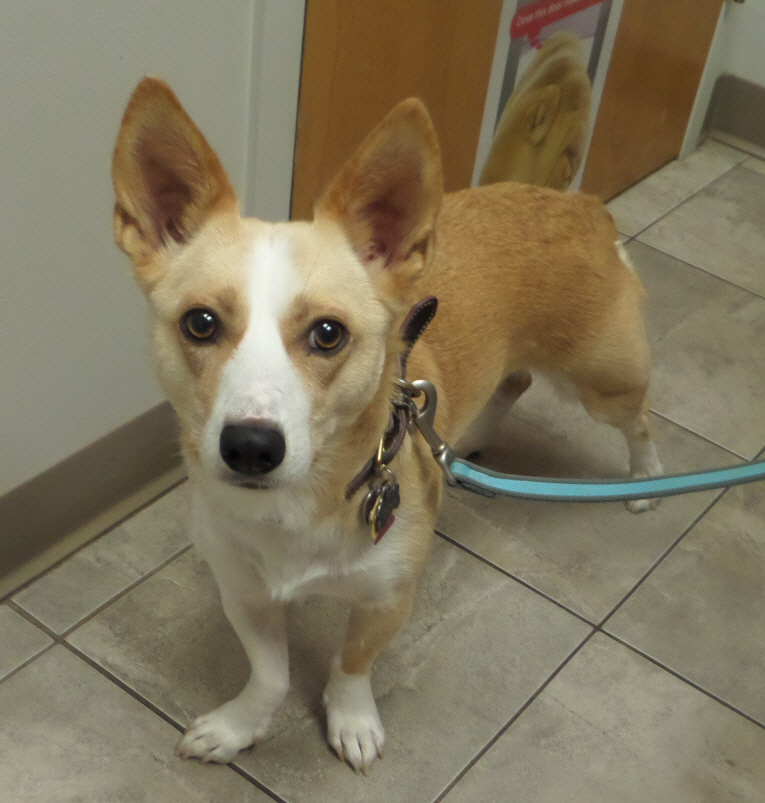
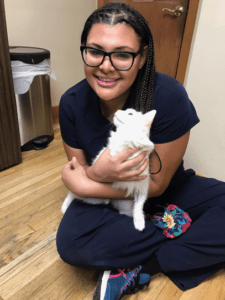 veterinarian, Dianicia Kirton, DVM, whose Hopkinton, Massachusetts, practice is Fear Free certified, has been recommending that Sushi get her teeth cleaned but my sister was hesitant. The veterinarian addressed each of her concerns until eventually she was ready to move forward. A few weeks later, Sushi’s mom brought her in for the teeth cleaning, although she was still nervous and reluctant. The veterinarian and staff were very calming and worked on Sushi quickly. Everything went well, and Sushi was her normal, happy self afterward. My sister told the vet that she felt like she had been “Fear Freed,” and Dr. Kirton responded, “Yes, it’s as much for the people as it is for the animals.” My sister was happy with the whole experience and thankful to have found a practice that uses these methods!
veterinarian, Dianicia Kirton, DVM, whose Hopkinton, Massachusetts, practice is Fear Free certified, has been recommending that Sushi get her teeth cleaned but my sister was hesitant. The veterinarian addressed each of her concerns until eventually she was ready to move forward. A few weeks later, Sushi’s mom brought her in for the teeth cleaning, although she was still nervous and reluctant. The veterinarian and staff were very calming and worked on Sushi quickly. Everything went well, and Sushi was her normal, happy self afterward. My sister told the vet that she felt like she had been “Fear Freed,” and Dr. Kirton responded, “Yes, it’s as much for the people as it is for the animals.” My sister was happy with the whole experience and thankful to have found a practice that uses these methods! Pennie, a 7-year-old 78-pound Chesapeake Bay Retriever, had never had a full veterinary exam after her puppy vaccines because she bared her teeth and growled at veterinary team members at every clinic she was taken to. When she was brought to us, we implemented several Fear Free strategies, spending 45 minutes building her trust both outside the clinic and in the exam room. We were able to get her to stand on the lift table and receive vaccinations without being muzzled. On her third visit, we were able to lift her lips and examine her teeth. Now she boards with us routinely and is a big part of our veterinary practice family. Implementing these Fear Free tools has changed Pennie’s life and her owner is now able to better understand and relate to her dog, making it much safer to take her for walks and be groomed.
Pennie, a 7-year-old 78-pound Chesapeake Bay Retriever, had never had a full veterinary exam after her puppy vaccines because she bared her teeth and growled at veterinary team members at every clinic she was taken to. When she was brought to us, we implemented several Fear Free strategies, spending 45 minutes building her trust both outside the clinic and in the exam room. We were able to get her to stand on the lift table and receive vaccinations without being muzzled. On her third visit, we were able to lift her lips and examine her teeth. Now she boards with us routinely and is a big part of our veterinary practice family. Implementing these Fear Free tools has changed Pennie’s life and her owner is now able to better understand and relate to her dog, making it much safer to take her for walks and be groomed.
 We love our Fear Free veterinary hospital. At TLC, there are separate areas for cats and dogs. We took our two cats in last week, and the exam room was comfortable, with shelves for the cats to explore. A board listed the names of the technician and veterinarian who would be seeing the cats, so we knew who would be treating them. The technician who went over the intake information was sweet and tender with Lucy and Lilu. An email ahead of time alerted us that a new veterinarian would be seeing the cats. She was calm and handled the cats gently. Both cats were calm throughout the visit—although Lucy didn’t much like having her teeth examined—and when they got home they came out of their carriers calmly and went about their day. Lilu was her regular self and didn’t hide away as she has on some prior visits to other clinics. The clinic called the next day to see how the cats reacted to their vaccines and visit. We feel we have found our new clinic!
We love our Fear Free veterinary hospital. At TLC, there are separate areas for cats and dogs. We took our two cats in last week, and the exam room was comfortable, with shelves for the cats to explore. A board listed the names of the technician and veterinarian who would be seeing the cats, so we knew who would be treating them. The technician who went over the intake information was sweet and tender with Lucy and Lilu. An email ahead of time alerted us that a new veterinarian would be seeing the cats. She was calm and handled the cats gently. Both cats were calm throughout the visit—although Lucy didn’t much like having her teeth examined—and when they got home they came out of their carriers calmly and went about their day. Lilu was her regular self and didn’t hide away as she has on some prior visits to other clinics. The clinic called the next day to see how the cats reacted to their vaccines and visit. We feel we have found our new clinic! reactive. During her first appointment she was quite nervous, but with the help of some peanut butter as a distraction she allowed us to pet her. We decided that that was a win and that Zola would benefit from coming back another time after having gabapentin to help calm her. At her next visit, Zola was visibly more relaxed, and we had a Kong full of peanut butter ready for her. Knowing that Zola did better with minimal restraint we kept her focused on the Kong and were able to do a full exam, vaccinations and a blood draw. Zola’s owners had never seen her so relaxed at the vet and she has since come back willing and happy to see us.
reactive. During her first appointment she was quite nervous, but with the help of some peanut butter as a distraction she allowed us to pet her. We decided that that was a win and that Zola would benefit from coming back another time after having gabapentin to help calm her. At her next visit, Zola was visibly more relaxed, and we had a Kong full of peanut butter ready for her. Knowing that Zola did better with minimal restraint we kept her focused on the Kong and were able to do a full exam, vaccinations and a blood draw. Zola’s owners had never seen her so relaxed at the vet and she has since come back willing and happy to see us.
